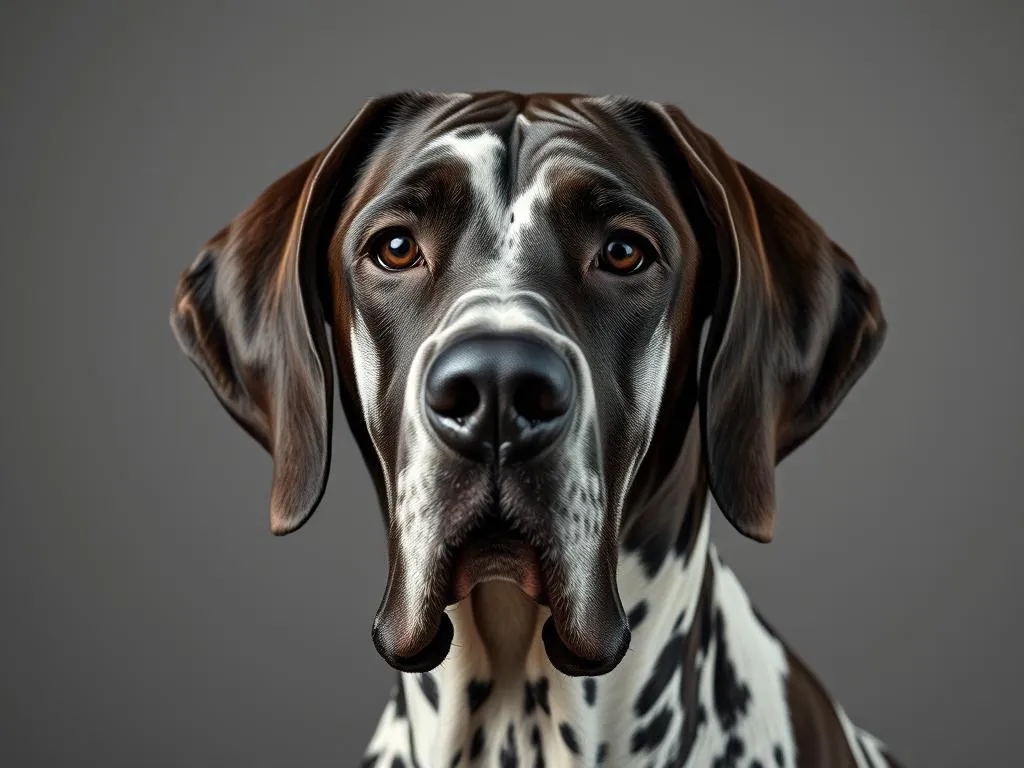
Introduction
When it comes to choosing a pet, many potential dog owners consider whether their new furry friend will trigger allergies. Hypoallergenic pets are often sought after by those who suffer from allergies, leading to the question: is a Great Dane hypoallergenic? Understanding the hypoallergenic qualities of different dog breeds can significantly impact your decision-making process.
Among the various dog breeds, the Great Dane stands out for its impressive size and gentle temperament. Known as the “gentle giant,” this breed is beloved by families and individuals alike. In this article, we will explore whether Great Danes are hypoallergenic, the factors that contribute to dog allergies, and what potential owners should consider before bringing a Great Dane into their homes.
Understanding Hypoallergenic Dogs
Definition of Hypoallergenic
The term hypoallergenic refers to substances that are less likely to trigger allergic reactions in sensitive individuals. While no dog is entirely free of allergens, certain breeds are known to produce fewer allergens, making them more suitable for allergy sufferers.
Common misconceptions about hypoallergenic pets often lead to confusion. Many believe that these breeds do not shed or produce dander, which is not entirely accurate. Instead, hypoallergenic breeds tend to have coats that trap dander and hair, reducing the amount that becomes airborne.
How Allergies Work
Dog allergies typically stem from three primary sources of allergens: dander (tiny skin flakes), saliva, and urine. When a dog grooms itself, saliva can be transferred to its fur and skin, leading to the release of allergens into the environment. For individuals with allergies, exposure to these allergens can cause symptoms ranging from mild irritation to severe respiratory issues.
Understanding how these allergens affect people is crucial for potential dog owners. Allergy sufferers may experience symptoms such as sneezing, itching, and difficulty breathing, which can severely impact their quality of life.
Overview of the Great Dane Breed
Characteristics of Great Danes
Great Danes are known for their impressive stature, often standing between 28 to 34 inches tall at the shoulder. Despite their size, they are typically gentle, affectionate, and good-natured. This breed is characterized by its short coat, which can come in various colors, including fawn, brindle, blue, and harlequin.
The lifespan of a Great Dane averages around 7 to 10 years, but they are prone to certain health issues, such as hip dysplasia, heart conditions, and bloat. Understanding these aspects is essential for potential owners, as they can impact both the dog’s well-being and the owner’s experience.
Historically, Great Danes were bred for hunting large game, but today they are cherished as family pets. Their friendly disposition and loyalty make them excellent companions for people of all ages.
Popularity and Suitability as Family Pets
Great Danes are immensely popular due to their combination of size, loyalty, and temperament. They tend to get along well with children and other pets, making them an ideal choice for families. Their protective nature also provides a sense of security, which adds to their appeal as family pets.
However, owning a Great Dane does come with challenges. Their size requires ample space and regular exercise, which may not be suitable for all households. Additionally, their tendency to drool can be a concern for some prospective owners.
Allergen Production in Dogs
Factors Affecting Allergen Levels
Allergen production varies significantly among dog breeds. Factors such as coat type, grooming habits, and individual dog behavior can all influence the amount of allergens a dog produces. Breeds with hair that grows continuously, like Poodles, often shed less dander compared to those with fur that sheds more frequently.
Regular grooming and maintenance play a crucial role in controlling allergen levels in the home. Bathing and brushing your dog can help reduce the amount of loose hair and dander that circulates in the environment.
Great Dane-Specific Allergen Production
Research on allergen levels in Great Danes compared to other breeds has shown that they are not considered hypoallergenic. Great Danes do produce dander and saliva, which can trigger allergies in sensitive individuals. While their short coat may seem advantageous for allergy sufferers, it does not eliminate the presence of allergens.
A study examining allergen levels in various breeds found that Great Danes produce moderate levels of dander and saliva. This means that potential owners with allergies should be cautious and consider their sensitivities before bringing a Great Dane into their home.
Are Great Danes Hypoallergenic?
Scientific Studies and Findings
Several studies have examined the hypoallergenic qualities of various dog breeds, including Great Danes. These studies typically measure the levels of allergens present in the dog’s environment and how they correlate with allergy sufferers’ reactions. Findings indicate that Great Danes do not fall into the category of hypoallergenic dogs.
In fact, breeds that are often labeled as hypoallergenic, such as the Maltese or the Schnauzer, demonstrate significantly lower levels of allergens compared to Great Danes. This comparison highlights the importance of choosing the right breed for individuals with allergies.
Expert Opinions
Veterinarians and dog breeders often advise allergy sufferers to be cautious when considering a Great Dane. While some owners may report minimal allergic reactions, this is highly individual and cannot be generalized. Many Great Dane owners have shared anecdotal evidence regarding their experiences with allergies, but these experiences can vary widely.
For individuals with severe allergies, it is advisable to consult with a healthcare professional or an allergist before deciding to bring a Great Dane into their home.
Managing Allergies with Great Danes
Tips for Allergy Sufferers
For those who are determined to own a Great Dane despite allergies, there are several strategies to help manage allergens in the home:
- Regular Grooming: Schedule weekly baths and frequent brushing to minimize dander and hair accumulation.
- Air Purification: Use HEPA air purifiers to filter out allergens from the air.
- Cleaning Routines: Regularly vacuum and dust your home to keep allergens at bay. Consider using vacuums equipped with HEPA filters.
- Designated Dog Areas: Limit your Great Dane’s access to certain areas of the home, such as bedrooms, to reduce allergen exposure in those spaces.
Alternative Solutions
If managing allergies proves to be too challenging, there are several other hypoallergenic dog breeds to consider, such as:
- Poodle
- Bichon Frise
- Basenji
- Portuguese Water Dog
These breeds typically produce fewer allergens and may be a better fit for individuals with allergies. Additionally, various products can help manage allergens, including pet-safe cleaning solutions and specialized grooming tools.
Conclusion
In summary, the question of whether a Great Dane is hypoallergenic is best answered with a clear “no.” While they may be gentle giants and suitable companions for many, their allergen production makes them less ideal for those with sensitivities.
Before deciding to bring a Great Dane into your home, it’s important to weigh the potential health implications for both you and the dog. Consulting with specialists and understanding your allergies will provide valuable insights as you consider your options. Ultimately, the joy of dog ownership should not come at the expense of your health, so be sure to take the time to find the right breed for your lifestyle and needs.









